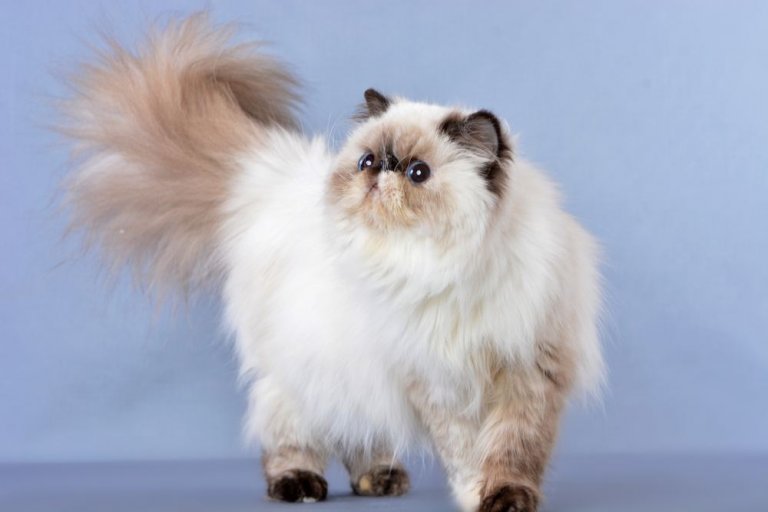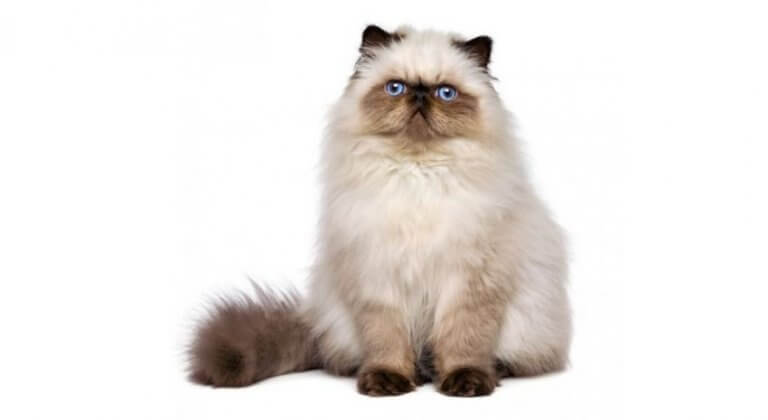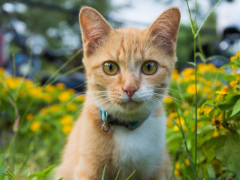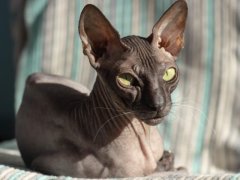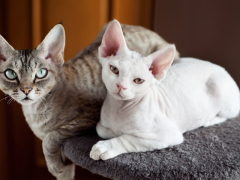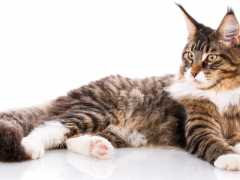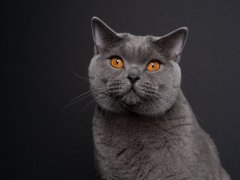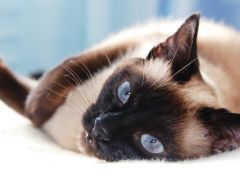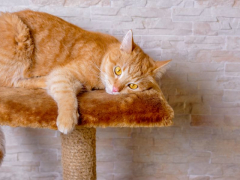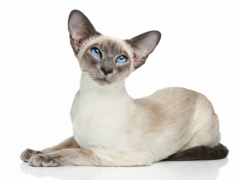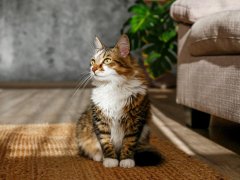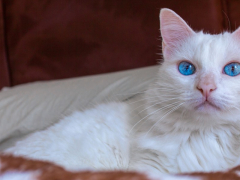Personality and Temperament
Is the Himalayan a Persian cat? Is the Colorpoint Persian the same as a Himalayan? The answer varies depending on the breed registry. Some organizations view the Himalayan—fondly nicknamed the Himmie—as a Persian color variant and others classify the Himalayan as its own separate breed.
Himalayans or Colorpoint Persian cats have pointed markings and gorgeous blue eyes like Siamese cats. At the same time, they possess long, silky coats like their Persian cousins. In addition, that Persian influence means Himalayans typically have flat or shortened faces that contribute to their unique appearance.
Most Himalayan cats are incredibly sweet natured, with a fondness for cuddling up to their favorite people. Thanks to their Siamese heritage, these cats tend to be a bit more playful than the average Persian. If you are looking for a cat that loves to lounge and you don't mind daily grooming sessions, then the Himalayan might be your perfect feline companion.
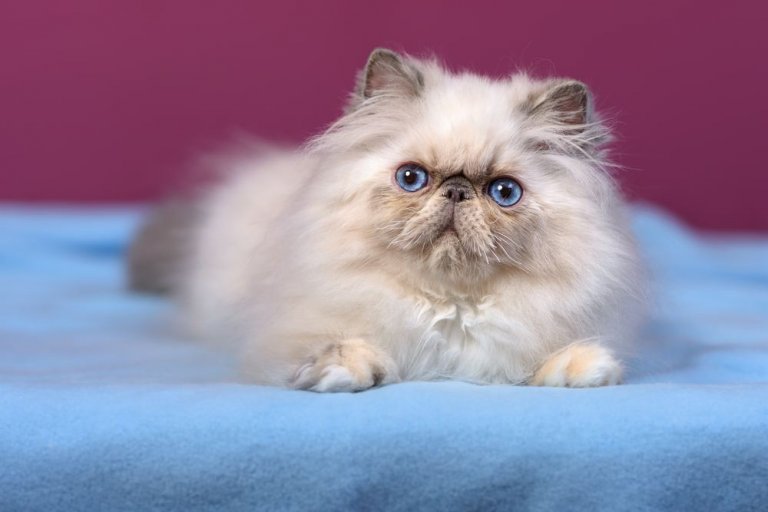
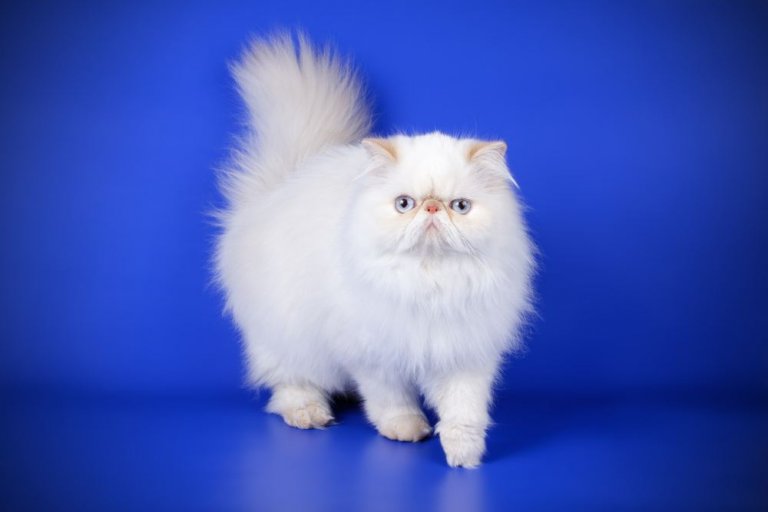
Care
Nutrition
Grooming
Exercise
Health
Himalayan cats have no special nutritional needs, but like all other cats, the Himalayan thrives on a high-quality diet that includes real meat or fish as the first ingredient. You might wish to look for food that contains added omega essential fatty acids to support skin and coat health.
Long, luxurious fur calls for daily grooming sessions, which Himalayan cats typically enjoy. Not only does daily brushing prevent mats from forming, it is a wonderful bonding ritual. Some Himalayan cats require daily facial care to remove tear staining. This is more common in individuals with flatter faces and facial folds that catch moisture as it travels down from the tear ducts.
Additional grooming rituals include regular nail trims and toothbrushing, along with ear cleaning. Some Himalayan cats are prone to oily skin and hair, making occasional baths necessary.
Because the Himalayan cats are prone to obesity, it is very important to encourage daily exercise. Luckily, these cats enjoy intense play and come to look forward to it once it is a habit. Just like Siamese, Himalayan cats enjoy interactive games like fetch and will happily chase a laser beam (just be sure not to shine the laser into your cat's eyes).
If you have a cat with a very flat face, you might need to reduce the speed and intensity of your play sessions to help prevent shortness of breath.
Himalayan cats are generally healthy, however, some do carry the gene for polycystic kidney disease. Responsible breeders test for PKD, greatly reducing the likelihood of producing kittens that are prone to the disease.
Since Himalayan cats are brachycephalic, with flattened faces, they can suffer from brachycephalic airway syndrome, which can cause breathing difficulties. Some Himalayan cats also have dental malocclusions, along with cherry eye, which can occur in any breed with eyes that protrude.
Some individuals suffer from feline hyperesthesia syndrome (twitch-skin syndrome), which is a nervous system disorder that can cause a wide range of uncomfortable symptoms.
A common heart condition called hypertrophic cardiomyopathy (HCM) is also seen in Himalayan cats.
None of these issues are prevalent and most Himalayan breeders are careful to pair only the healthiest parents with the hope of preventing heritable diseases from plaguing offspring.
History
During the 1930s, two Harvard researchers named Dr. Clyde Keeler and Virginia Cobb decided to conduct a study by combining Siamese and Persian cats. Their efforts led to the birth of a cat named Newton's Debutante. They simply called it a Siamese–Persian after its parents. This beautiful cat had classic Siamese colorpoint markings, blue eyes, and a long, silky coat. He ultimately became one of the first cats to represent the Himalayan (Colorpoint Persian) breed.
Cat breeder and conservationist Jean Mill, also known as the founder of the Bengal cat breed, began working on the breed in 1948.
In 1955, Brian Sterling-Webb created a similar crossbred cat that he called the Long-Haired Colorpoint. In 1957, Marguerita Goforth's continued efforts at combining Siamese and Persian cats gained breed recognition from the Cat Fanciers' Association (CFA). Goforth is credited with naming the Himalayan cat breed.
Outcrossing to both Siamese and Persian cats continued throughout the next few decades, with various breeders focusing on either Persian or Siamese traits. In 1984, the CFA decided that the Himalayan cat was actually a Persian variant and many of today's Himalayans exhibit more Persian traits than Siamese traits.
All major cat registries recognize the breed, using either the Himalayan name or the Colorpoint Persian name. Despite the labeling conundrum that pits the Himalayan versus the Colorpoint Persian, both breeds are exactly the same.
